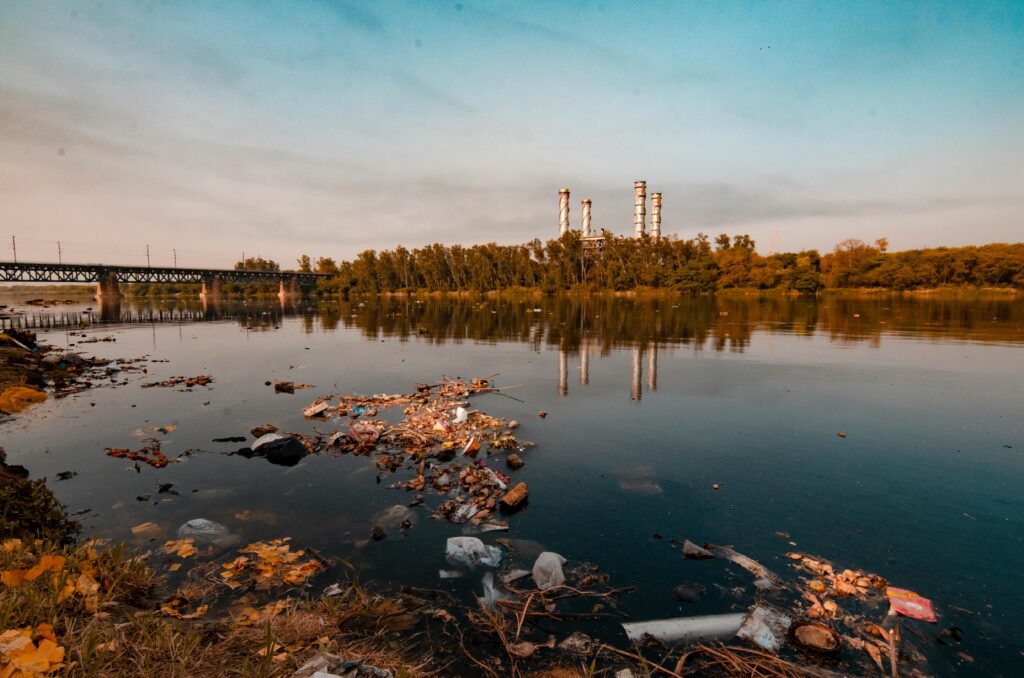Scientific research is usually executed to find or test specific results; however, surprises do occur, leading to unintended discoveries. This accidental discovery happened when scientists at the University of Colorado Boulder were studying atmospheric particles over the field of Oklahoma. The team originally aimed to study aerosol particle formation and growth in agricultural regions. Instead, they stumbled upon something far more concerning.
Their advanced equipment captured traces of MCCPs in the atmosphere above rural Oklahoma farmland. This discovery is the first time traces of MCCPs have been detected in the Western Hemisphere. Airborne MCCPs have never before been detected in North America, making this a historic event for environmental science.
What are MCCPs and Why Do They Matter?

Medium-chain chlorinated paraffins appear in metalworking fluids, PVC manufacturing, and textile production. MCCPs belong to a family of chlorinated paraffins with carbon chains containing 14-17 atoms. MCCPs are persistent organic pollutants, used as flame retardants and plasticizers. They are toxic for aquatic life and can build up in food chains if they accumulate in water.
Tracing Pollution

These chemicals often trickle into wastewater and eventually accumulate in biosolids. Biosolids are processed from human sewage into fertilizer and, when spread on agricultural fields, can release pollution into the air. Researchers suspect biosolids fertilizer serves as the primary source of atmospheric MCCPs. Spreading biosolids helps recycle nutrients but can carry pollutants into the air, soil, and water.
“When sewage sludges are spread across the fields, those toxic compounds could be released into the air. We can’t show directly that that’s happening, but we think it’s a reasonable way that they could be winding up in the air. Sewage sludge fertilizers have been shown to release similar compounds,” explained Daniel Katz, the study’s lead author.
Advanced Detection Technology Enables Real-Time Monitoring
To identify the chemical compounds in the air, the team collected air samples around the clock at the Oklahoma site. They repeated this process for one month. They used nitrate ion chemical ionization mass spectrometry for continuous atmospheric monitoring. This technology allowed researchers to detect compounds at extremely low concentrations. The high-resolution data revealed daily fluctuations in MCCP levels. These variations helped researchers understand how the chemicals move through the atmosphere.
Global Presence Confirms Long-Range Transport Concerns
Until now, MCCPs have only been measured in Antarctica and Asia. Researchers observed how MCCP levels fluctuated each day, and they attributed it to gas-particle partitioning. This means these chemicals shift between a gaseous state or attaching themselves to other airborne particles. MCCPs behavior significantly impacts how MCCP spreads and travels.
Scientists worry that MCCPs could reach regions where they were never produced or used. This long-range transport capability and its persistence in the environment raise cause for concern among scientists. While the long-term effects of MCCPs accumulation in environments are yet to be confirmed, MCCPs are known as “forever chemicals”. These are long-lasting toxic chemicals that break down slowly over time.
Regulatory Whack-A-Mole Creates Unintended Consequences
The regulation of short-chain chlorinated paraffins may have inadvertently increased MCCP production. Industries often substitute banned chemicals with similar but unregulated alternatives. This pattern creates a regulatory game of “whack-a-mole” with toxic chemical compounds.
“We always have these unintended consequences of regulation, where you regulate something, and then there’s still a need for the products that those were in,” said Professor Ellie Browne, who highlighted this troubling trend in chemical regulation. When authorities ban one substance, manufacturers typically replace it with something structurally similar. These substitutions often prove equally as hazardous but remain unregulated for years. SCCPs are restricted under the Stockholm Convention but MCCPs only recently entered consideration.
Health Risks and Environmental Persistence Raise Alarms
MCCPs share very similar characteristics with PFAS “forever chemicals” that persist indefinitely. Their presence in soils recently led to a ban on biosolid fertilizer by the Oklahoma Senate. Research suggests these compounds can accumulate in living organisms and are slow to degrade, resisting the natural breakdown processes.
Studies indicate MCCPs may cause liver, kidney, and thyroid problems in laboratory animals. While human health effects remain under investigation, preliminary evidence suggests MCCPs accumulation could pose significant health risks. The compounds’ persistence means exposure effects could last for decades.
Impacts on Ecosystems and Agriculture
MCCPs are not only a threat to people, they persist in the environment, meaning they contaminate waterways and agricultural farmland. These toxins also bioaccumulate in fish, birds, and mammals. Research demonstrates that MCCPs are toxic to aquatic organisms, impair earthworm reproduction, and disrupt food webs.
Laboratory studies confirm MCCPs damage liver and thyroid functions in fish, with additional behavioral effects. The continued release via products and biosolid fertilizers increases ecological and agricultural risks. This has prompted researchers to recommend urgent regulatory actions to protect these ecosystems and farmland.
Monitoring and Policy Reform
The Stockholm Convention currently considers adding MCCPs to its list of banned pollutants. Multiple countries support restrictions on these chemicals based on mounting evidence and results of laboratory studies. Oklahoma Senate Bill 3 passed 42-4, establishing a gradual phase-out of biosolids by 2027. The ban reflects growing concerns about PFAS contamination and other toxic substances in sewage sludge. Senator Grant Green led the legislative effort to address growing health and environmental worries. Rural residents raised concerns about foul odors, swarming flies, and possible contamination caused by biosolids use.
Scientists now possess the analytical tools needed to monitor MCCPs systematically. Future research should examine seasonal variations and geographic distribution patterns. This data will inform risk assessments and regulatory decisions. This accidental finding demonstrates how much we still don’t know about atmospheric contamination.
As researchers continue investigating these compounds, policymakers must balance industrial needs with public health protection. The time is now for leaders and agencies to step up monitoring, research, and regulation of MCCPs to guard both ecosystems and public health.
Read More: Vintage Photos of the US Show What American Cities Looked Like Before Pollution Had to Be Regulated

